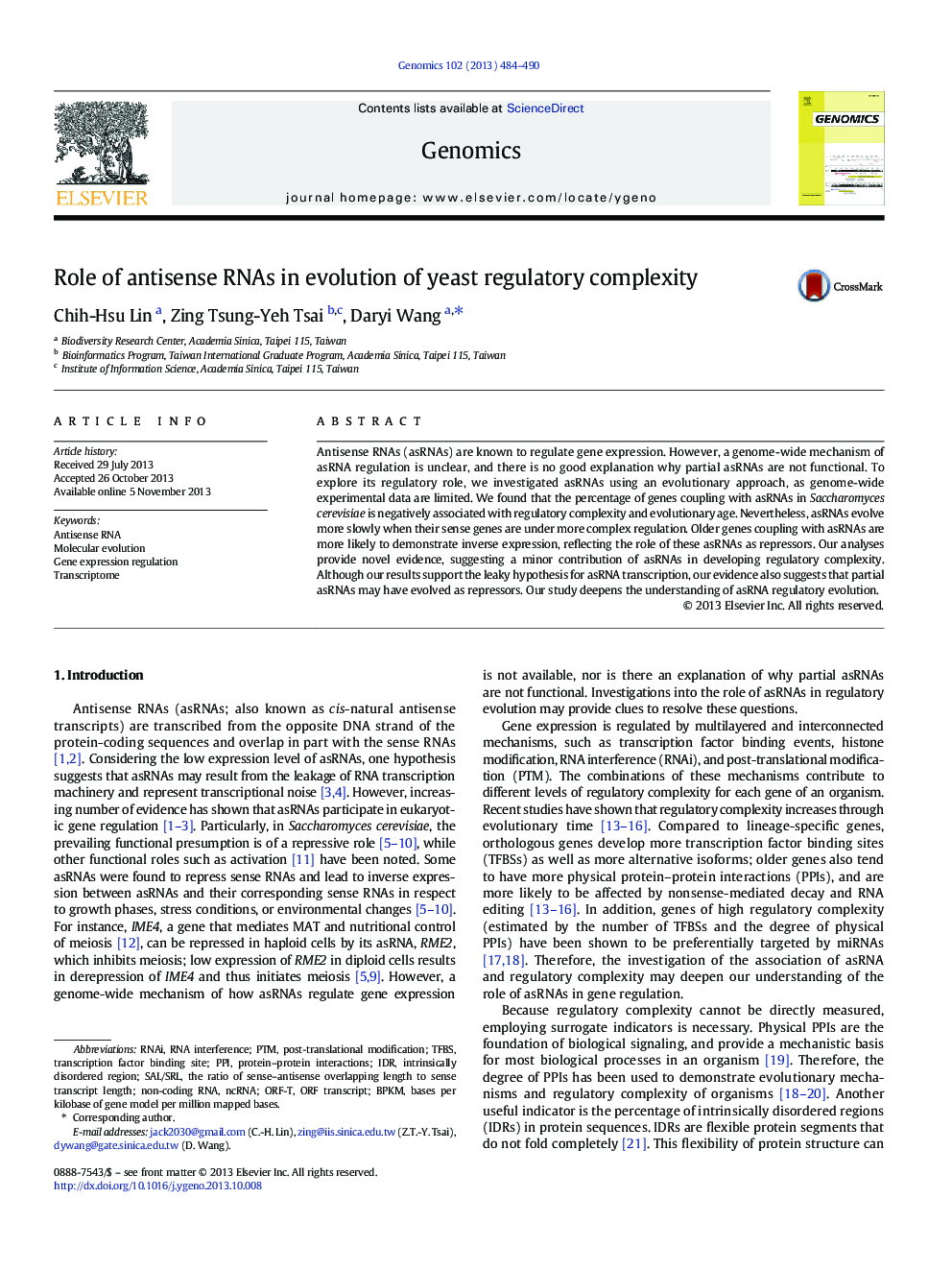| Article ID | Journal | Published Year | Pages | File Type |
|---|---|---|---|---|
| 2820832 | Genomics | 2013 | 7 Pages |
•We annotated yeast asRNAs in mid-log, early stationary phase, and after heat shock.•The ratio of genes coupling with asRNAs is inversely related to regulatory complexity.•AsRNAs evolve more slowly when their sense genes are under more complex regulation.•Old genes are more likely to display inverse expression with their asRNAs.
Antisense RNAs (asRNAs) are known to regulate gene expression. However, a genome-wide mechanism of asRNA regulation is unclear, and there is no good explanation why partial asRNAs are not functional. To explore its regulatory role, we investigated asRNAs using an evolutionary approach, as genome-wide experimental data are limited. We found that the percentage of genes coupling with asRNAs in Saccharomyces cerevisiae is negatively associated with regulatory complexity and evolutionary age. Nevertheless, asRNAs evolve more slowly when their sense genes are under more complex regulation. Older genes coupling with asRNAs are more likely to demonstrate inverse expression, reflecting the role of these asRNAs as repressors. Our analyses provide novel evidence, suggesting a minor contribution of asRNAs in developing regulatory complexity. Although our results support the leaky hypothesis for asRNA transcription, our evidence also suggests that partial asRNAs may have evolved as repressors. Our study deepens the understanding of asRNA regulatory evolution.
